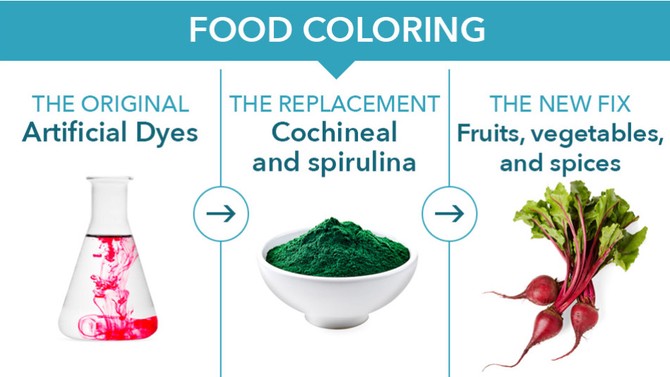3 Better-for-You Food Swaps to Try
Here are a few makeunders for common "healthy food swaps" worth sampling—including a surprising sweetener and a fruity meat alternative.
By Juno DeMelo

Photos: Getty Images
Once upon a time, marketers claimed that soda was a wholesome family beverage. As scientists discovered the sad truth—too many soft drinks are unhealthy for people young and old—manufacturers came up with sugar substitutions that seemed almost as good as the real thing. Then we learned that these “fixes” cause problems, too. Today food companies are going back to nature to source ingredients and seek healthier alternatives. Here, three makeunders worth sampling.
Sugar makes life sweeter. However, added sugar provides essentially no nutritional value, and Americans eat too much of it. Excess sugar consumption is linked to a higher risk of heart disease, and as national intake has increased, so have obesity levels.
These sugar substitutes (e.g., saccharin, aspartame, sucralose) can please your palate with their intense sweetness, but research suggests your brain may remain unsatisfied, anticipating calories that never come—until you scarf down more food.
MycoTechnology, a biotech company, has developed a process to make low-sugar chocolate with mushroom extract. “It works by adhering to the tongue’s taste receptor sites and blocking your ability to taste the full bitterness of cacao beans, so the chocolate needs less added sugar,” spokesman Josh Hahn explains. You may see this ingredient listed as “natural extract” on chocolate labels. You can buy chocolate bars here.
Sweets
The Original: Sugar
Sugar makes life sweeter. However, added sugar provides essentially no nutritional value, and Americans eat too much of it. Excess sugar consumption is linked to a higher risk of heart disease, and as national intake has increased, so have obesity levels.
The Replacement: Artificial Sweeteners
These sugar substitutes (e.g., saccharin, aspartame, sucralose) can please your palate with their intense sweetness, but research suggests your brain may remain unsatisfied, anticipating calories that never come—until you scarf down more food.
The New Fix: Mushrooms
MycoTechnology, a biotech company, has developed a process to make low-sugar chocolate with mushroom extract. “It works by adhering to the tongue’s taste receptor sites and blocking your ability to taste the full bitterness of cacao beans, so the chocolate needs less added sugar,” spokesman Josh Hahn explains. You may see this ingredient listed as “natural extract” on chocolate labels. You can buy chocolate bars here.

Photos: Getty Images and Shutterstock
Food Coloring
The Original: Artificial Dyes
They’re used to prettify foods from pastries to pickles, but since a 2007 study suggested that synthetic color additives might increase hyperactivity in kids, consumers have been wary (even though the FDA disputes the link).
The Replacement: Cochineal and Spirulina
Manufacturers have experimented with colorings free of artificial chemicals with mixed results. Cochineal, a red dye made from crushed bugs that’s been used to give a rosy hue to yogurt and drinks, isn’t vegetarian and can cause allergies. The blue-green bacterium spirulina is FDA-approved to dye foods, but it alters their taste.
The New Fix: Fruits, Vegetables and Spices
Some food tech companies are using blends of carrots, red cabbage, beets, and grapes to color products like cereal and candy. In 2016, Kraft began mixing the spices annatto, turmeric, and paprika to color its mac and cheese, while General Mills is using an annatto-turmeric combo, in addition to some fruit and veggie juices, in Trix cereal.

Photos: Getty Images and Shutterstock
Animal Protein
The Original: Beef, Pork and Lamb
High-protein diets are a popular way to lose weight and build muscle. But the eating patterns of hard-core carnivores have also been associated with certain cancers, and people with at least one risk factor for heart disease who consume more red meat have higher mortality rates.
The Replacement: Soy Protein Isolate
Soybeans and tofu are quality proteins and good sources of fiber, minerals, and complex carbs. But to make soy protein isolate powder—found in many meatless “meat” products like veggie burgers and hot dogs—the beans need to be chemically processed, which strips them of many nutrients and in some cases may leave behind substances like aluminum and hexane.The New Fix: Jackfruit
Before it ripens, the spiky fruit has a meaty taste and a texture that takes on the flavor of whatever it’s cooked with. Because of its unwieldy size and sticky sap, it’s hard to handle. But brands like the Jackfruit Company and Upton’s Naturals sell it as a prepared meat substitute you can use in curries and carnitas. Unprocessed jackfruit contains between one and six grams of fiber per serving. Worth a taste!
Published 02/24/2017

